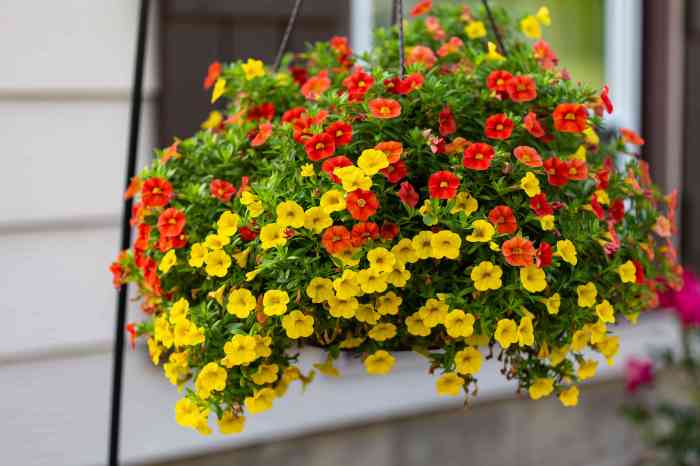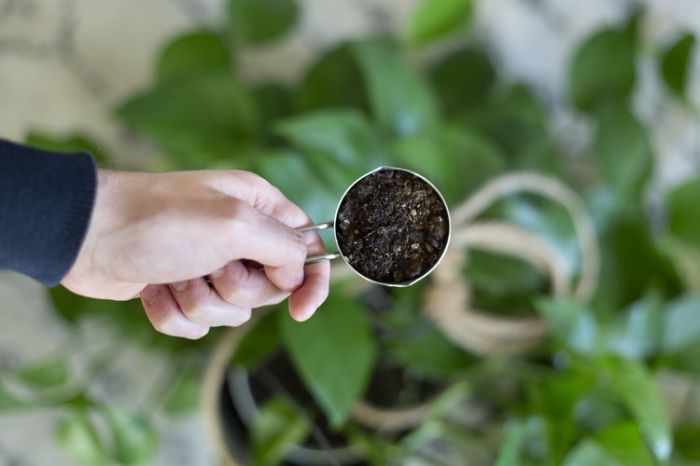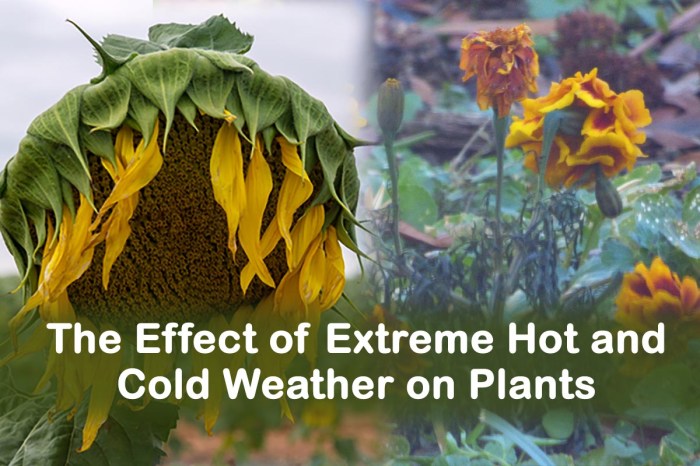Hanging plants extreme heat: a formidable challenge that requires meticulous care and proactive measures. With soaring temperatures becoming increasingly common, it’s imperative to safeguard these delicate plants from the scorching sun’s wrath.
This comprehensive guide delves into the physiological effects of extreme heat on hanging plants, exploring their vulnerability to dehydration, leaf scorching, and stunted growth. Discover effective strategies for shielding your cherished plants, including shade provision, humidity enhancement, and the judicious selection of heat-tolerant species.
Impact of Extreme Heat on Hanging Plants

Extreme heat can take a toll on hanging plants, leading to various physiological issues. Dehydration, leaf scorching, and stunted growth are common effects of excessive heat on these plants.
Hanging plants are particularly vulnerable to heat damage due to their limited root systems and exposure to direct sunlight. The lack of a stable root structure makes it challenging for them to absorb sufficient water and nutrients from the soil, leading to dehydration.
Prolonged exposure to intense heat can cause leaf scorching, characterized by brown or yellow patches on the leaves. Additionally, extreme heat can inhibit plant growth, resulting in stunted development and reduced foliage.
Susceptible Hanging Plants
Certain hanging plant species are more susceptible to heat damage than others. Some examples include:
- Ferns:Ferns, such as maidenhair ferns and Boston ferns, prefer humid environments and can struggle in extreme heat.
- Trailing succulents:Trailing succulents, like string of pearls and burro’s tail, have delicate leaves that are prone to scorching in high temperatures.
- Tropical foliage plants:Tropical foliage plants, such as peace lilies and prayer plants, are adapted to warm, humid climates and may experience leaf damage in extreme heat.
Strategies for Protecting Hanging Plants from Extreme Heat

Extreme heat can be detrimental to hanging plants, causing them to wilt, scorch, or even die. Fortunately, there are several strategies you can employ to protect your precious greenery from the harsh effects of the sun.One effective method is to provide shade for your hanging plants.
Shade cloths, awnings, or umbrellas can create a protective barrier between the sun’s rays and your plants. These coverings can reduce the intensity of sunlight and lower the temperature around your plants, creating a more hospitable environment.Misting or spraying your hanging plants with water is another helpful strategy.
Water droplets evaporate, creating a cooling effect that can reduce heat stress. Misting also increases humidity, which can help prevent plants from drying out.Finally, consider selecting heat-tolerant hanging plants. Some species are naturally more resilient to high temperatures and can withstand intense sunlight.
Extreme heat can be particularly damaging to hanging plants, as the heat can quickly dry out the soil and cause the roots to overheat. To protect your hanging plants from the heat, it’s important to provide them with plenty of shade and water.
You can also use a bunnings pot hanger to elevate your plants off the ground, which will help to improve air circulation and prevent the roots from overheating.
Incorporating these plants into your outdoor spaces will give you a better chance of success in extreme heat conditions.
Creating a Microclimate for Hanging Plants in Extreme Heat

To protect hanging plants from extreme heat, consider creating a microclimate around them. This involves manipulating the environment to provide optimal conditions for plant survival.
Increasing Air Circulation
- Use fans or evaporative coolers to increase air circulation around the plants. This helps to dissipate heat and prevent the air from becoming stagnant.
Creating a Humid Environment
- Group hanging plants together to create a more humid environment. The plants will release moisture into the air, which can help to cool the surrounding area.
- Mist the plants with water regularly. This will help to increase the humidity around the plants and prevent them from drying out.
Mulching
- Apply a layer of mulch around the base of the hanging plants. Mulch helps to retain moisture in the soil and regulate soil temperatures, which can help to protect the plants from heat stress.
Watering and Fertilizing Hanging Plants in Extreme Heat
Maintaining proper hydration and nutrition is crucial for hanging plants during extreme heat. Understanding the specific needs of these plants in these conditions is essential to prevent damage and promote healthy growth.
Watering Frequency and Amount
Hanging plants can struggle in extreme heat, so it’s important to choose the right spot for them. For the best results, hang your plants in a location that receives bright, indirect light and has good air circulation. You can also check out our guide on where to hang plants for more tips on choosing the perfect spot for your hanging plants.
By following these tips, you can help your hanging plants thrive even in the hottest weather.
In extreme heat, hanging plants require more frequent watering than usual. However, overwatering should be avoided as it can lead to root rot. The frequency of watering depends on factors such as the size of the plant, the type of soil, and the amount of sunlight it receives.
As a general rule, water when the top inch of soil feels dry to the touch.
Adjusting Fertilizer Schedules
Despite their resilience, extreme heat can take a toll on hanging plants. To combat this, consider hanging plants that like morning sun , as they can tolerate higher temperatures. Morning sun provides ample light while avoiding the harsh afternoon rays, making it ideal for these heat-tolerant plants.
During periods of extreme heat, it is important to adjust fertilizer schedules. Excessive fertilization can cause nutrient burn, damaging the plant’s roots and leaves. Reduce the frequency of fertilizing by half or more, and use a balanced fertilizer diluted to half strength.
Monitoring and Troubleshooting Hanging Plants in Extreme Heat

Regular monitoring of hanging plants is crucial during extreme heat to detect early signs of heat stress, such as wilting, yellowing leaves, or leaf drop. If any of these symptoms are observed, immediate action should be taken to address the issue.
Troubleshooting heat-related problems involves adjusting watering schedules to increase frequency and duration, providing additional shade by moving plants to shaded areas or using shade cloths, and relocating plants to cooler areas with better air circulation.
Watering Schedules
During extreme heat, hanging plants may require more frequent and thorough watering to compensate for increased evaporation rates. Adjust watering schedules accordingly, considering the plant’s specific needs and the prevailing temperature.
Additional Shade
Providing additional shade can help protect hanging plants from direct sunlight and reduce heat stress. Move plants to shaded areas or use shade cloths to create a protective barrier.
Relocation, Hanging plants extreme heat
If possible, relocate hanging plants to cooler areas with better air circulation. This could involve moving them indoors, placing them in a shaded corner of the patio, or hanging them under a tree.
Wrap-Up: Hanging Plants Extreme Heat
Protecting hanging plants from extreme heat demands a multifaceted approach that encompasses shade provision, humidity enhancement, microclimate creation, and vigilant watering and fertilization practices. By embracing these strategies, you can ensure the well-being of your hanging plants, allowing them to thrive even under the most challenging conditions.
FAQ Explained
How often should I water hanging plants in extreme heat?
Water hanging plants deeply and frequently during periods of extreme heat, allowing the soil to dry out slightly between waterings.
What are some heat-tolerant hanging plants?
Heat-tolerant hanging plants include succulents, ferns, and certain varieties of petunias, begonias, and geraniums.
How can I create a microclimate for hanging plants?
Create a microclimate by grouping hanging plants together, using fans or evaporative coolers to increase air circulation, and mulching around the plants to retain moisture and regulate soil temperatures.